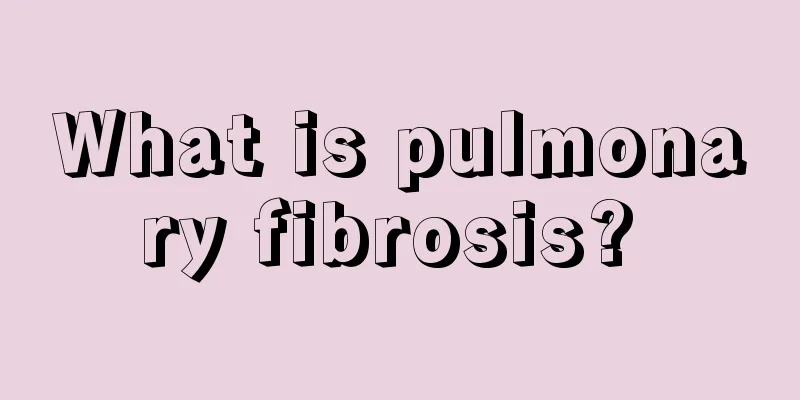What is pulmonary fibrosis?

|
Pulmonary fibrosis is a relatively common disease. This disease usually causes changes in the lung function tissue and body cells. It may even cause damage to the lungs and have an impact on the human body. Generally, most of them are related to some problems, so everyone should be vigilant in normal times. You just need to understand the problem of the disease clearly and treat it. Pulmonary fibrosis is the name of a disease. The interstitial tissue of the lung is composed of collagen, elastin, and protein sugars. When fibroblasts are damaged chemically or physically, they secrete collagen to repair the interstitial tissue of the lung, thereby causing pulmonary fibrosis. This is the result of the body's repair after the lungs are damaged. Etiology and pathology Most interstitial lung diseases share a common underlying pathological process. The initial injury is followed by alveolitis, and as the inflammatory-immune response progresses, pulmonary fibrosis eventually leads to irreversible scarring (fibrosis) of the alveolar walls, airways, and blood vessels. Inflammation and abnormal repair lead to the proliferation of lung interstitial cells, which produce large amounts of collagen and extracellular matrix. The normal structure of the lung tissue is replaced by cystic cavities, which are surrounded by thickened fibrous tissue. This is the late stage of "honeycomb lung". Pulmonary interstitial fibrosis and the formation of "honeycomb lung" lead to the permanent loss of alveolar gas-exchange units. Alveolar collapse during the development of pulmonary fibrosis is a result of the loss of epithelial cells. The exposed basement membrane can directly contact and form fibrous tissue, and a large number of alveoli collapse to form dense scars, resulting in honeycomb-like changes. Honeycombing is a manifestation of scarring and structural reorganization. After lung injury, whether the result of repair is fibrosis or restoration of normal anatomical structure depends on whether the exudates and debris in the alveoli can be effectively cleared. If the exudate in the alveoli is not cleared, fibroblasts and other cells will invade and proliferate (immunohistochemical staining has confirmed that proteoglycans, integrins, junctions, etc. can be found in fibroblast foci. These characteristics indicate that fibrosis is an active progression rather than a sequela of "old" fibrous tissue.), thereby causing progressive progression of pulmonary fibrosis. |
<<: What kind of scented tea tastes good?
>>: What to do if straw mushrooms taste bitter
Recommend
What are the early symptoms of cervical cancer? What are the early symptoms of cervical cancer that cannot be ignored?
The incidence of cervical cancer is very high amo...
6 dietary suggestions to save those who stay up late at night
With the rapid development of modern society, peo...
What to do if the car tire pressure is too high
Car tire problems are the most common situation. ...
How to prevent liver cancer better? To prevent liver cancer, we need to establish 5 lines of defense
How to prevent liver cancer? Prevent hepatitis vi...
Be sure to turn off the computer during lunch break in the office
According to medical reports, people who use comp...
What are the symptoms of allergic rhinitis and conjunctivitis
The nose and eyes are generally the parts that pe...
What are the nutritional values of fermented glutinous rice?
Laozao is a very common delicacy in Sichuan and C...
Early symptoms of breast cancer
There are generally no obvious symptoms in the ea...
What are the reasons why black coffee is a diuretic
Coffee is a very common drink in life. It has a g...
5 major prevention methods for prostate
With the progress of the times, people's livi...
Chest pain, early symptoms of breast cancer
Chest pain may be related to breast cancer, but i...
Is intrahepatic stones serious?
Intrahepatic stones are relatively serious. If no...
Will warts fall off by themselves?
Warts, also known as fleshy warts, are a common s...
What's wrong with the pain on the inner side of the calf
Pain is a symptom that can occur in multiple part...
Surgical treatment of colorectal cancer
The surgical treatment of colorectal cancer can b...









